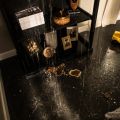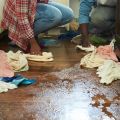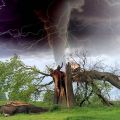DIY Flood Cleanup Mistakes to Avoid in Savannah, Georgia

Most flooding events happen without warning. Whether they come in the form of coastal floods, river floods, flash floods, groundwater flooding, or sewage overflows, the resulting property damage may be extensive and can result to long-term issues such as mold growth.
Standing floodwaters can cause so many issues in just a matter of hours, so a home or business owner may be prompted to take immediate action and perform the cleanup on their own. However, flood damage restoration is a complex process which could cause further problems if not done properly. ServiceMaster of Savannah discusses the common mistakes during do-it-yourself flood cleanup below.
Why You Should Avoid Do-It-Yourself Flood Cleanup
While property owners may be tempted to deal with flood damage on their own, there are many factors in the flood damage restoration process which would require the expertise of a professional restorer. Read them below.
Flood damage is not without its dangers.
- Flood damage may not be an immediate or obvious threat, but it can cause significant effects to your property.
- For example, flood damage can cause deep flooring seepage and harm your floors. This can be hard to detect unless you are a professional.
- Flood water can also be contaminated with pathogens, chemicals and sewage, causing health concerns.
You must not wait too long before cleaning up flood damage.
- Water damage worsens as time goes by.
- In minutes, it can cause wood materials, such as furniture and floors, to swell up.
- In days, it will cause wallpaper to peel and paint to bubble, and affect the shape of the structural supports of your house. Mold will also start growing.
- In weeks, mold and mildew will root deep into porous materials like wood and fabric, ruining them beyond repair.
- Mold growth can lead to health risks, such as allergic reactions, asthma aggravation, respiratory problems and, in serious cases, damage to your brain, kidneys and liver.
- Untreated water damage in the long-term can lead to building collapse.
Flood damage restoration requires the right equipment.
- Proper water damage restoration cannot be done with mops and towels alone.
- Professionals utilize advanced tools that are designed for this type of work. Here are some examples of equipment necessary for water damage restoration:
Air scrubber - this helps improve the air quality of the area affected.
Dehumidifier - removes moisture from the environment.
Extraction tool - removes huge volumes of water per minute.
Heavy-duty fan - utilized from drying out a room or confined space.
Moisture probe - used to determine where moisture is located.
Wall and floor drying systems
There is the risk of missing small details during do-it-yourself cleanup.
- When cleanup is performed on one's own, there is a possibility of missing the small details, which may cost you a lot of money in the future.
- There may be mold in hidden areas which may be missed, but could have been detected if a professional was called to perform the job.
- There is always a risk of missing something significant without years of training and experience in restoration services.
A flooded home can be dangerous.
- Floodwaters can bring a variety of dangers to your property.
- Contaminated water comes in three categories. Category 1 is clean water; though it may not be contaminated, it can still result to damages if not treated quickly. Category 2 is uncontaminated, used water, but it should not be ingested. Category 3 is grossly unsanitary water, containing pathogens, chemicals and sewage that may cause infections and illnesses.
- Swollen floors from water damage are less stable as they're expected to be.
- There's a high possibility of floodwaters bringing in dangerous debris like broken glass and metal fragments that can cut your feet or legs.
- Floodwaters may carry a fatal amount of electrical charge from fallen powerlines and loose wires. If it is safe to do so, turn off the power to your home and stay away from electrical hazards.
- Turn off sources of gas and propane to prevent gas leaks and explosions during a flood.
- Storms and floods can cause snakes, rats and other animals to seek shelter in your home.
Flood damage restoration professionals must be contacted as soon as possible.
- Floods are highly unpredictable events, causing property damage in an instant.
- The longer flood damage sits, the harder it will be to mitigate.
- Call an expert as soon as possible to minimize damage to your home.
Contact ServiceMaster of Savannah for Flood Damage Cleanup in Georgia
Floods often come unexpectedly, so if your flooding emergency cannot wait, call our 24/7 Emergency Response hotline at (912) 244-6966. ServiceMaster of Savannah services Brooklet, Clyo, Eden, Ellabell, Fleming, Fort Stewart, Garfield, Guyton, Hinesville, Meldrim, Midway, Pembroke, Pooler, Portal, Register, Riceboro, Richmond Hill, Rincon, Springfield, Statesboro, Tybee Island, and Walthourville, Georgia.
- You may also schedule an appointment by connecting with us online.
- Our office is located at 222 E Lathrop Ave, Savannah, GA 31415.
- Benefit from our wide range of restoration and cleaning services:
- Water Damage
- Fire Damage
- Storm Damage
- Mold Damage
- Reconstruction
- Commercial Cleaning
- Residential Cleaning
- Carpet Cleaning
- Floor Cleaning
- Upholstery Cleaning
- Air Duct Cleaning
- IICRC-certified firm in Savannah, Georgia
- Preferred Vendor for insurance companies
Don't know what to do next? We do. Contact us today.







